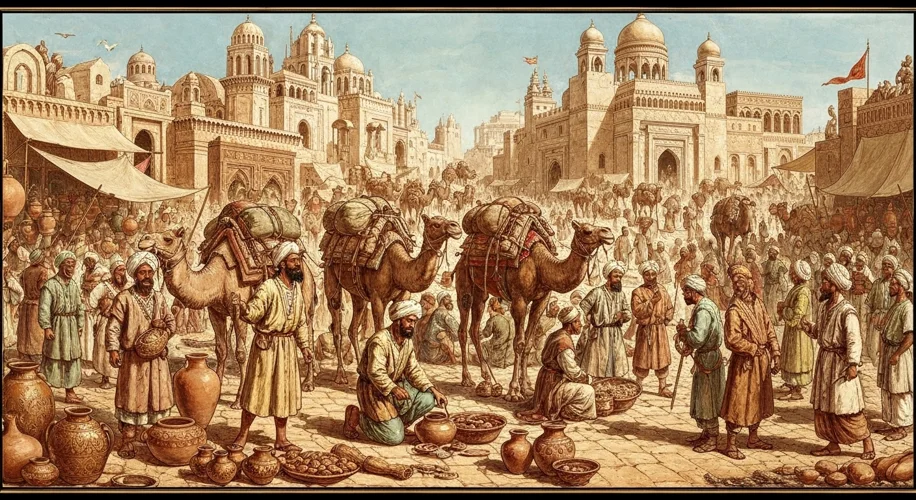Imagine a world without the internet, without airplanes, without even paved roads connecting continents. Yet, across vast deserts, towering mountains, and treacherous seas, a network of exchange flourished for over 1,500 years, weaving together civilizations and shaping the very fabric of human history. This was the Silk Road, not a single path, but a complex web of routes that pulsed with the lifeblood of commerce, ideas, and innovation.
From roughly the 2nd century BCE to the 15th century CE, the Silk Road was the planet’s premier superhighway. It was a testament to human ambition and the insatiable desire for the exotic and the valuable. At its heart, it was about trade. The name itself conjures images of shimmering silk, the luxury fabric that was China’s closely guarded secret for centuries. But the exchange went far beyond mere cloth.

Picture this: Roman merchants, their togas dusted with the fine sand of Parthian deserts, haggling for Chinese silk that would adorn the bodies of emperors and empresses. In return, they offered glassware, wool, gold, and silver. From India flowed spices, precious stones, and cotton textiles. Central Asian nomads, masters of horseback, provided horses renowned for their strength and speed, along with furs and livestock. The sheer scale of this undertaking is breathtaking. Caravans, sometimes numbering thousands of camels, traversed perilous landscapes, braving sandstorms, blizzards, and the constant threat of bandits.
But the Silk Road was more than just a conduit for goods; it was a vibrant artery for the flow of ideas and beliefs. As merchants and travelers moved, so too did their philosophies, religions, and technologies. Buddhism, originating in India, spread eastwards along these routes, transforming into a dominant spiritual force in Central Asia and China. Nestorian Christianity and Manichaeism also found footholds in distant lands. Later, Islam would sweep across the region, carried by traders and conquerors alike.
Consider the humble art of papermaking. Invented in China, this revolutionary technology traveled westward, eventually reaching Europe and profoundly impacting literacy and the dissemination of knowledge. Similarly, advancements in metallurgy, irrigation techniques, and even musical instruments found new homes and evolved as they encountered different cultures.
Key figures, though often lost to the annals of history, played crucial roles. Zhang Qian, a Han Dynasty envoy in the 2nd century BCE, is often credited with

